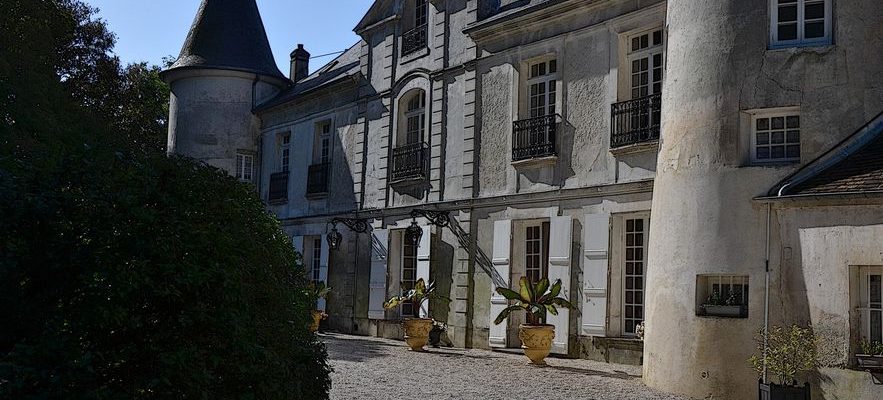Between these walls, there are no priceless paintings or furniture snatched at Christie’s at a high price. The few pieces that had a high market value went to auction in July 2021 – here a painting by Leonor Fini, there a portrait of Jacques Chazot by Bernard Buffet. But there remains a host of objects, memories, collected by the owner of the place over nearly five decades. At the Monthyon estate, nestled in a small town in Seine-et-Marne, near Meaux, almost nothing has changed. The six classically crafted cherubs still sit enthroned in the large living room, twirling under the blue-painted beams, frolicking on the bookcase, the lintel of the fireplace, or transformed into lamp bases.
It is here, by the fire, that Jean-Claude Brialy gave, in 1961, his first interview as lord of the castle to Pierre Desgraupes, the pope of Five Columns in the News. Two years earlier, on his 26th birthday, the actor acquired this 17th and 18th century Louis XIV-style residence, built on the ruins of a medieval fortress. It just turned The Handsome Sergehas no money, but his friends from the new wave, Chabrol, Godard and Truffaut, put their hands in their pockets to help him raise the 20 million old francs, the price of a castle of 600 meters squares where everything has to be redone.
A residence built in the 17th and 18th centuries on the ruins of a medieval fortress.
/ © Alain Girodet / DR
From 1959 to his death in 2007, Brialy spent his weekends there and gave free rein to his passion for flea markets, acquiring over the course of his travels an incalculable number of objects that today, the town hall of Meaux, in who he donated his property to, it is difficult to inventory. “He was a compulsive bargain hunter. Every time he moved, even at the end of the world, he ran to antique dealers, in search of the piece that would find refuge in Monthyon”, says Marc Rousseau, earthy character in charge of mission at the municipality and ex-local journalist, who was familiar with the place. “Hence the impossibility of dating the purchase and origin of most of its finds,” adds Anne Berbain, the site manager. Some are unusual: in the veranda, a bronze and glass display case topped with a dome is filled with… fake Gallé. Upstairs, an imposing purple four-poster bed occupies the master of the house’s bedroom, which also conceals a cap by Gabin (venerated by the master of the house), a red velvet Callas stage shoe, a slipper threadbare item with which Nureyev danced or a pair of glasses that belonged to Joséphine Baker.
In the living room adjoining that of the cherubs, the link between Brialy and Barbara sets the tone: for the one he likes to call his “wife” while she gives him “my husband” at will, the he actor bought a piano from the 1930s in 1972, an Erard quarter-grand model 0 on which the singer played and composed after the Sunday lunch that brought all of Paris together around the marble table in the dining room. Every corner of the property bears witness to Brialesque affections, such as these portraits of Gérard Philipe by the poster painter Raymond Moretti, these two bronzes by Jean Marais, a Lion Sun and a representation of his made-up character of The beauty and the Beasticonic film by Cocteau from 1946, or even these greeting cards designed by Yves Saint Laurent that Jean-Claude Brialy exhibits in his small guest house next to the swimming pool, today hung in the cramped corridor of the castle.
The cherubs’ living room with the library and the actor’s work table.
/ © Alain Girodet / DR
All these shadows, including those of the Dorléac sisters and Romy Schneider, haunt the walls of Monthyon. In 2021, the death of Bruno Finck, the actor’s long-term companion, who had the usufruct of the property, saw the town hall of Meaux work on its opening to the public, the councilor Jean-François Copé ensuring scrupulously respect the last wishes of Jean-Claude Brialy to whom he was close. It is now done, with visits by appointment in reduced gauge of a site which, according to the wishes of its illustrious occupant of yesteryear, has nothing of the museum and everything of the “artist’s residence” .
